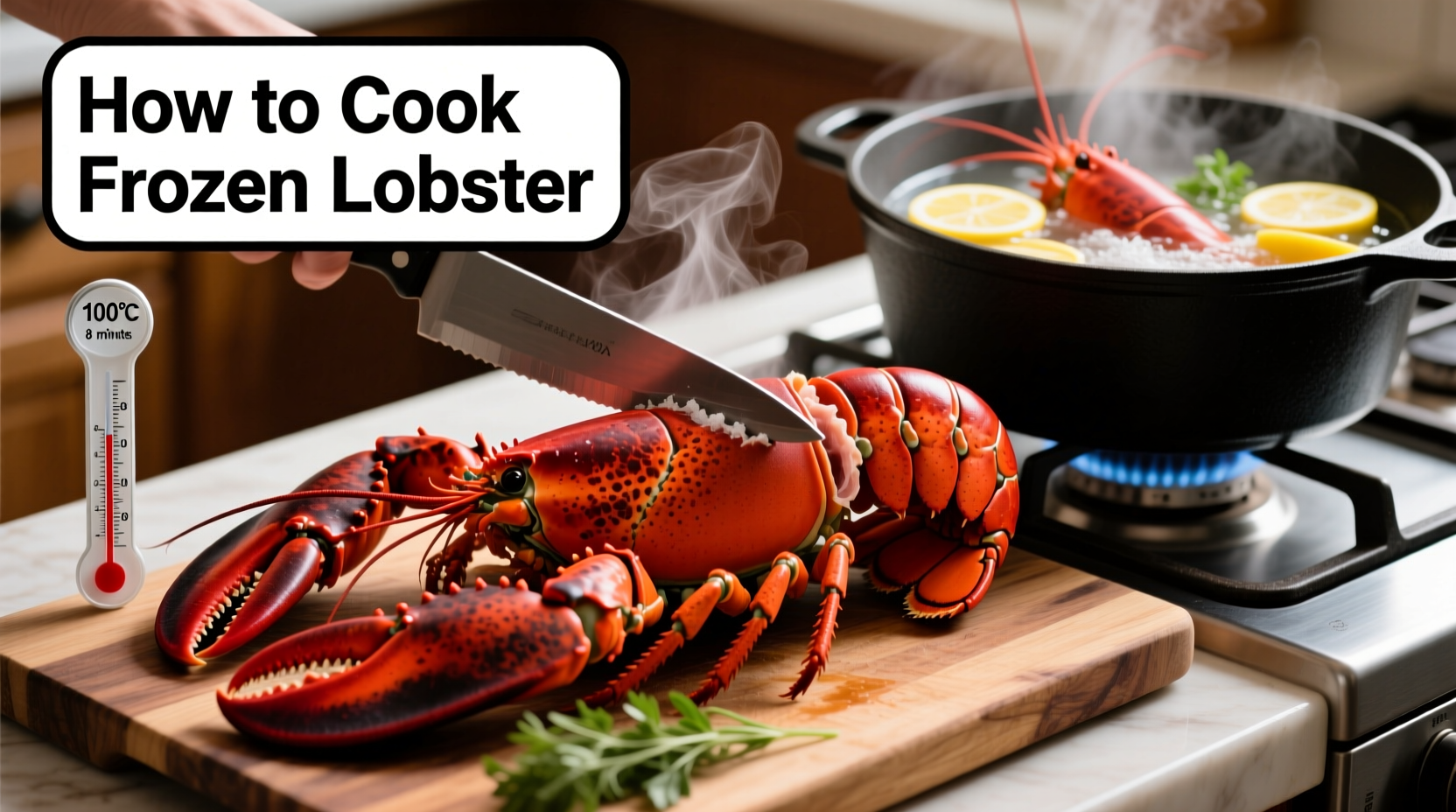Discover exactly how to transform frozen lobster into a restaurant-quality meal with this comprehensive guide. Whether you're working with whole lobsters or tails, you'll learn the precise thawing methods, cooking techniques, and doneness indicators that ensure tender, flavorful results every time. Skip the guesswork and avoid common mistakes that ruin expensive seafood.
Why Proper Thawing Is Non-Negotiable
Cooking frozen lobster without proper thawing leads to uneven texture and rubbery meat. The USDA recommends thawing seafood in the refrigerator (35-40°F) for optimal food safety and texture preservation. This slow method maintains the delicate muscle fibers that would otherwise seize up if exposed to rapid temperature changes.
| Thawing Method | Time Required | Best For | Food Safety Rating |
|---|---|---|---|
| Refrigerator (35-40°F) | 18-24 hours | Whole lobsters, premium tails | Excellent |
| Cold Water Bath | 1-2 hours | Last-minute preparation | Good |
| Room Temperature | 30-60 minutes | Never recommended | Poor |
| Direct from Frozen | N/A | Avoid completely | Dangerous |
Step-by-Step Thawing Process
Follow this precise timeline for perfect results:
- 24 hours before cooking: Place frozen lobster in a sealed container on the bottom shelf of your refrigerator
- 12 hours before: Check for ice crystals; replace container if condensation accumulates
- 2 hours before: Remove from packaging and place on a wire rack over a tray to allow drainage
- 30 minutes before: Pat completely dry with paper towels - moisture is the enemy of proper cooking

Four Cooking Methods Compared
Choose the right technique based on your equipment and desired outcome:
Boiling Method (Best for Beginners)
Fill a large pot with enough water to cover lobsters, adding 1/4 cup salt per gallon. Bring to rolling boil, then add lobsters head-first:
- 1-1.5 lb lobsters: 8-12 minutes
- 1.5-2 lb lobsters: 12-15 minutes
- Over 2 lb: 15-18 minutes
Remove when shells turn bright red and meat reaches 140°F internal temperature.
Steaming Method (Best Flavor Preservation)
Add 2 inches of salted water to a pot with a steamer basket. When water boils vigorously:
- Place lobsters in basket, cover tightly
- Steam 10-14 minutes for 1-1.5 lb lobsters
- Check for opaque white meat and 140°F internal temperature
Baking Method (Best for Tails)
Preheat oven to 350°F. Prepare tails by splitting lengthwise:
- Brush with melted butter and season
- Place on baking sheet, meat-side up
- Bake 12-15 minutes until meat turns opaque
- Finish under broiler for 2 minutes for color
Grilling Method (Best for Smoky Flavor)
High-heat grilling works only with thawed lobster tails:
- Preheat grill to 400°F
- Split tails lengthwise, brush with oil
- Grill meat-side down for 5-7 minutes
- Flip and cook shell-side down for 3-4 minutes
Doneness Indicators You Can Trust
Don't rely solely on cooking time. Verify doneness with these foolproof methods:
- Color change: Shell turns uniform bright red (greenish tint means undercooked)
- Meat texture: Firm but still slightly translucent when properly cooked
- Internal temperature: 140°F at thickest part (USDA standard for seafood)
- Antennae test: Pulls out easily from head section when fully cooked
Avoid These Costly Mistakes
Professional chefs consistently warn against these common errors:
- Overcooking: Just 2 extra minutes makes meat tough (lobster continues cooking after removal)
- Insufficient salt: Water should taste like seawater for proper flavor absorption
- Cooking from frozen: Creates uneven texture and potential food safety issues
- Using warm water thawing: Promotes bacterial growth in the danger zone (40-140°F)
Serving Perfection
Elevate your lobster with these professional finishing touches:
- Rest cooked lobster for 5 minutes before serving
- Serve with clarified butter and lemon wedges
- Pair with crisp white wine like Chablis or Pinot Grigio
- Accompany with drawn butter sauce containing a pinch of cayenne











 浙公网安备
33010002000092号
浙公网安备
33010002000092号 浙B2-20120091-4
浙B2-20120091-4